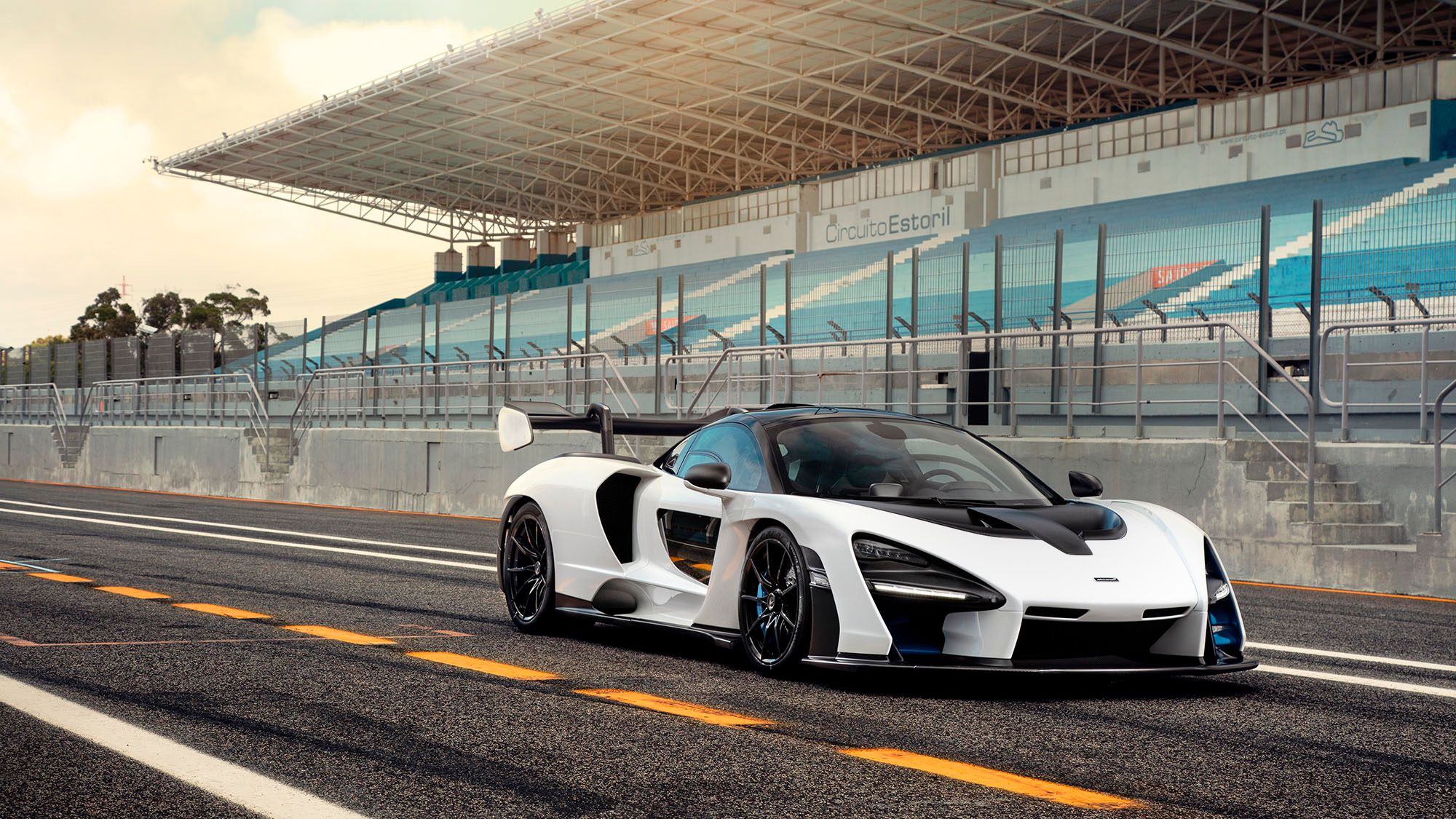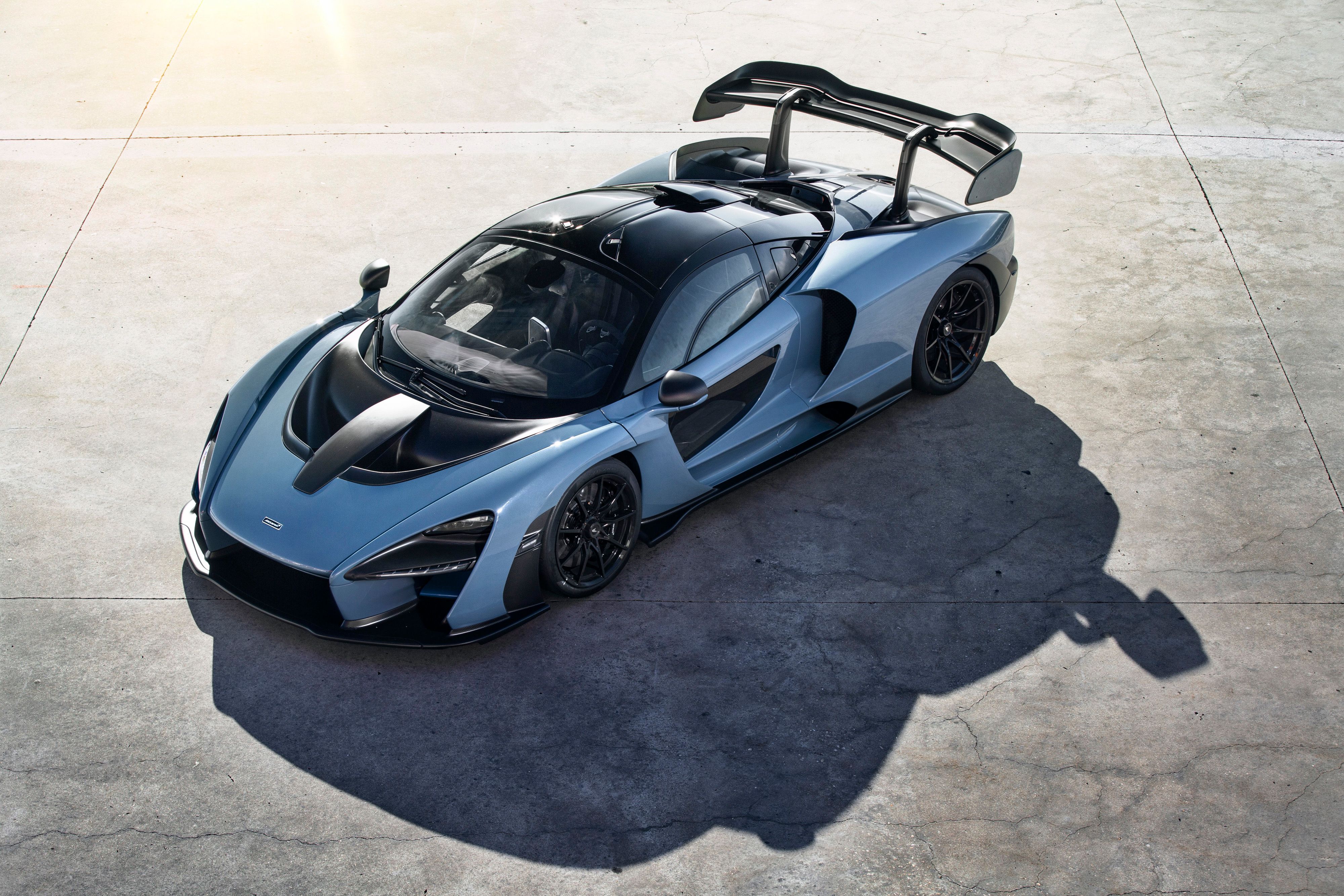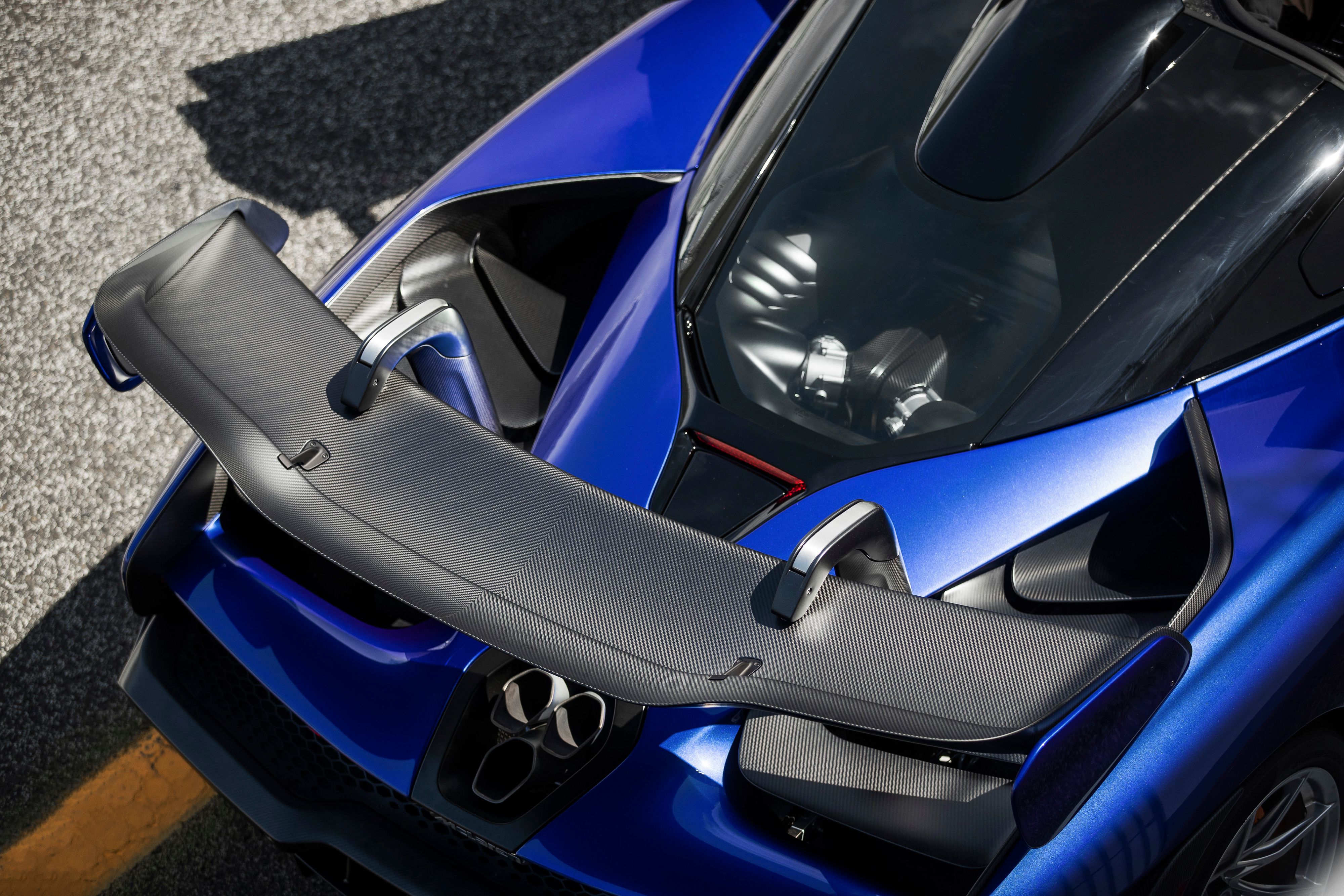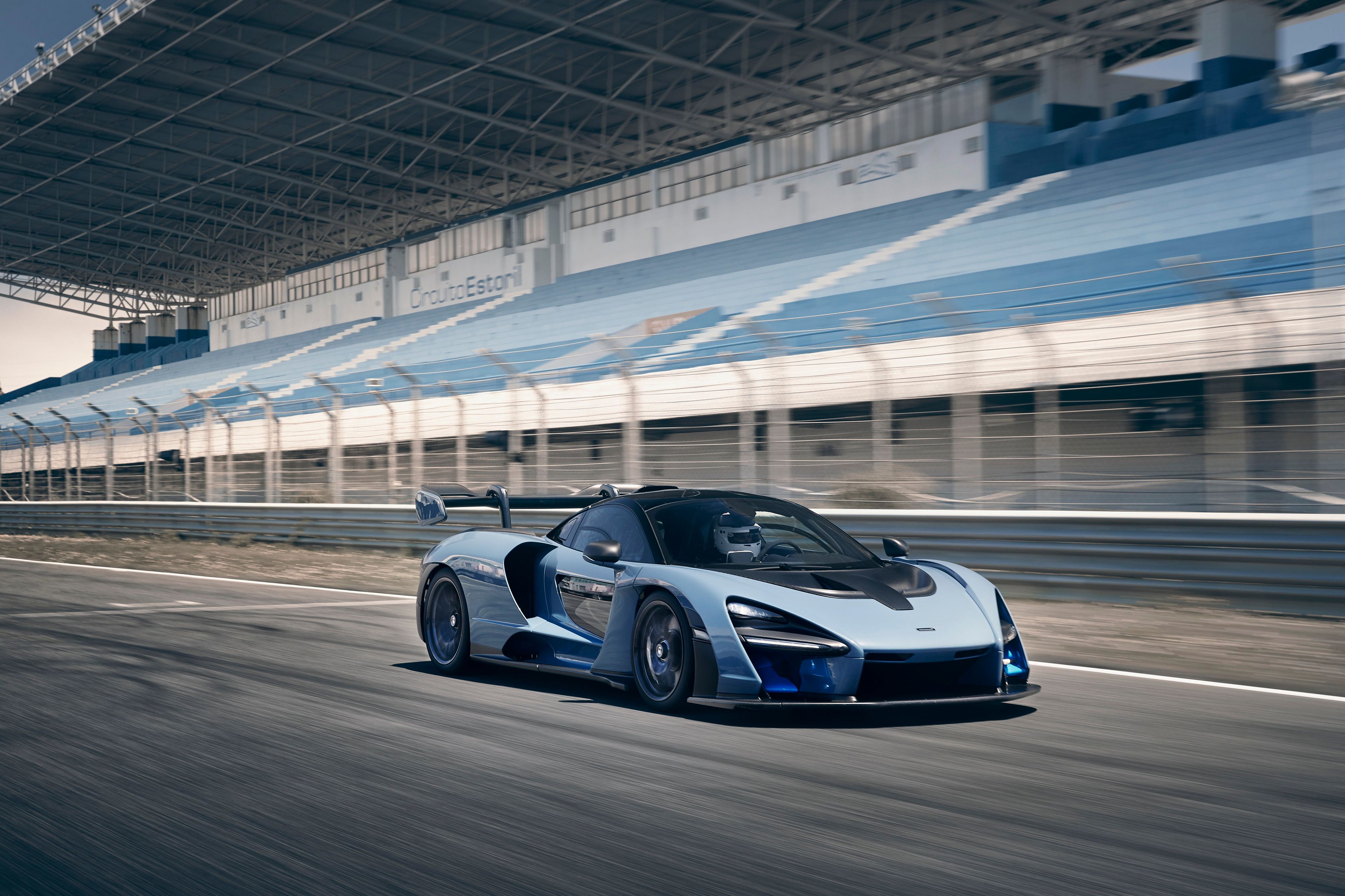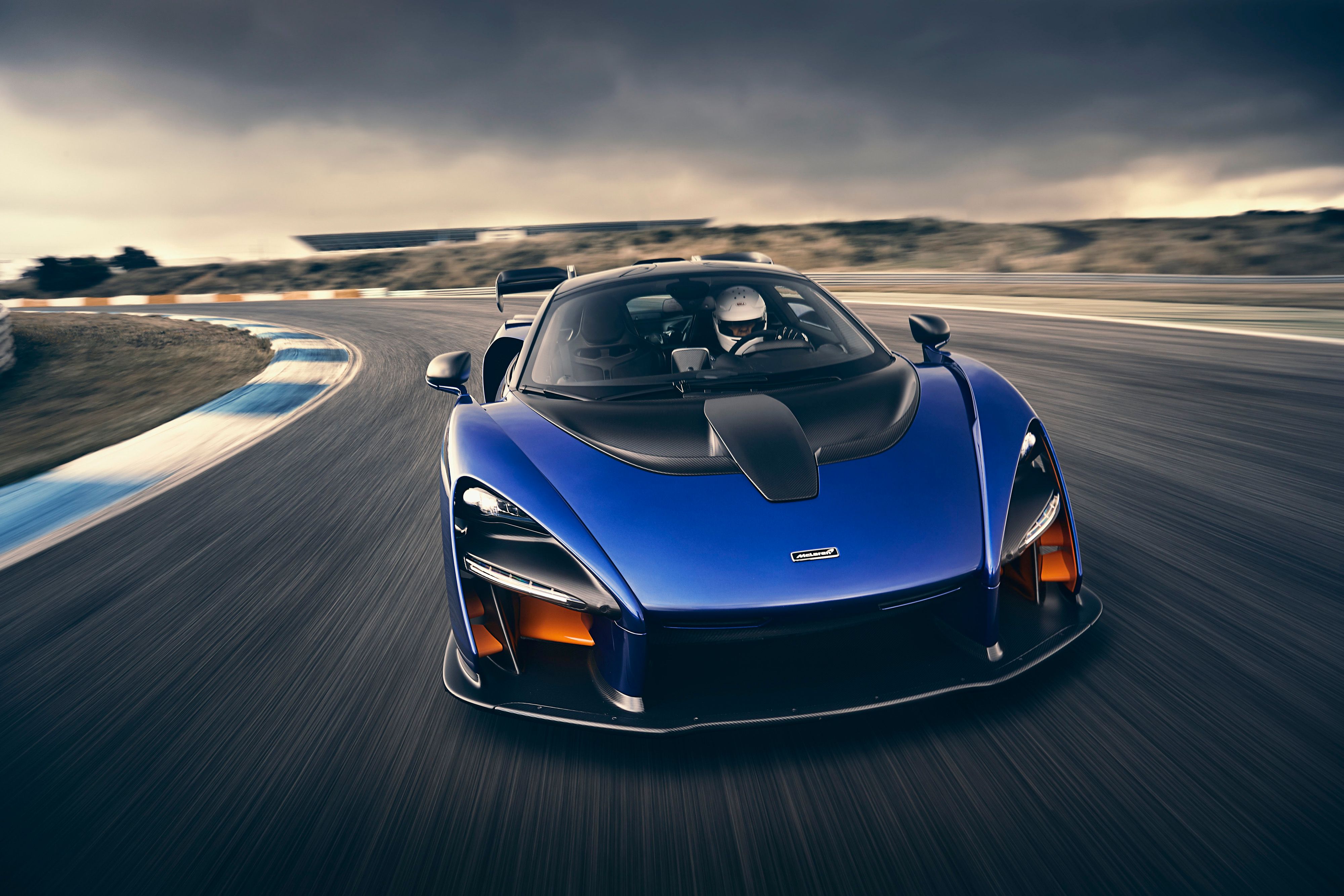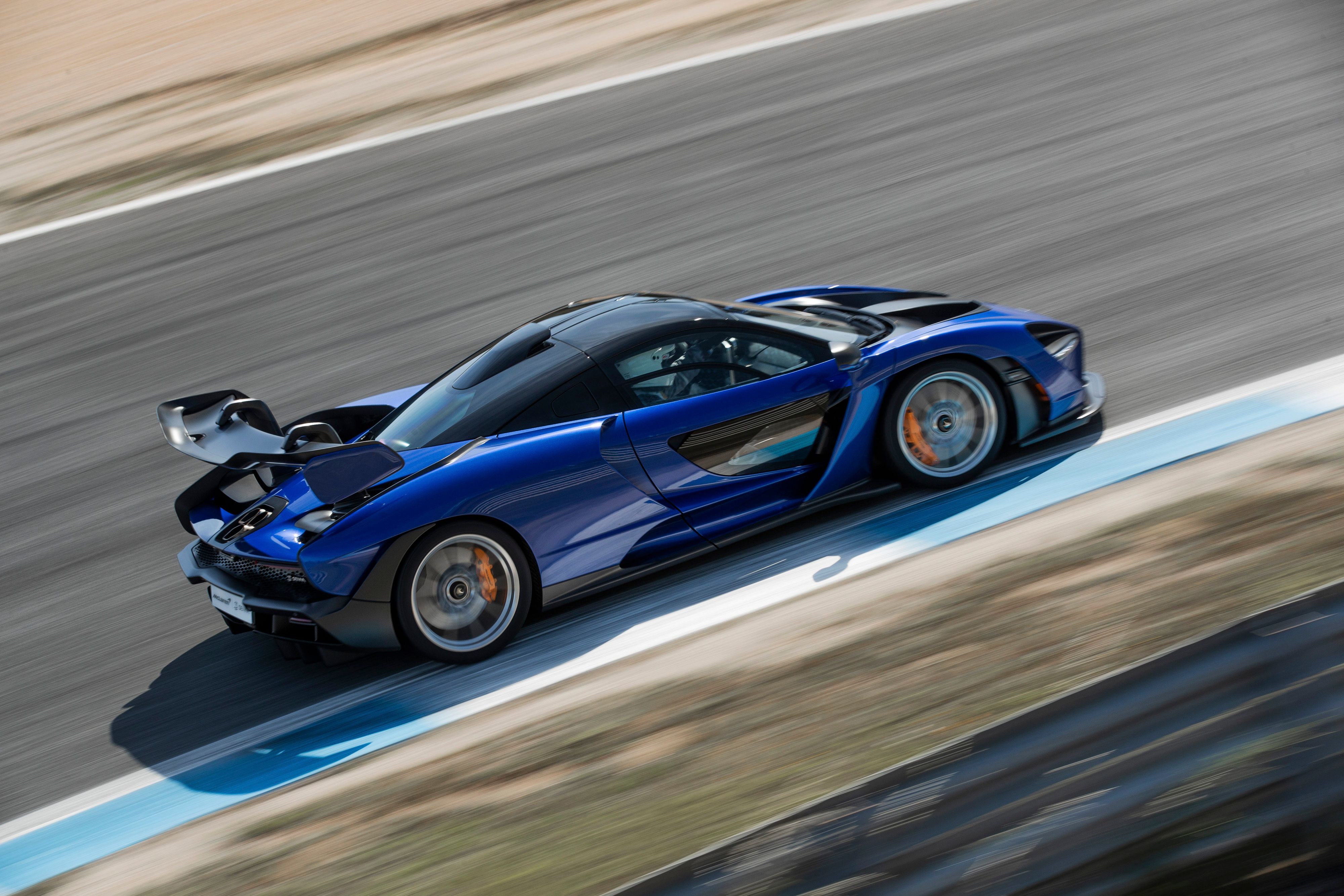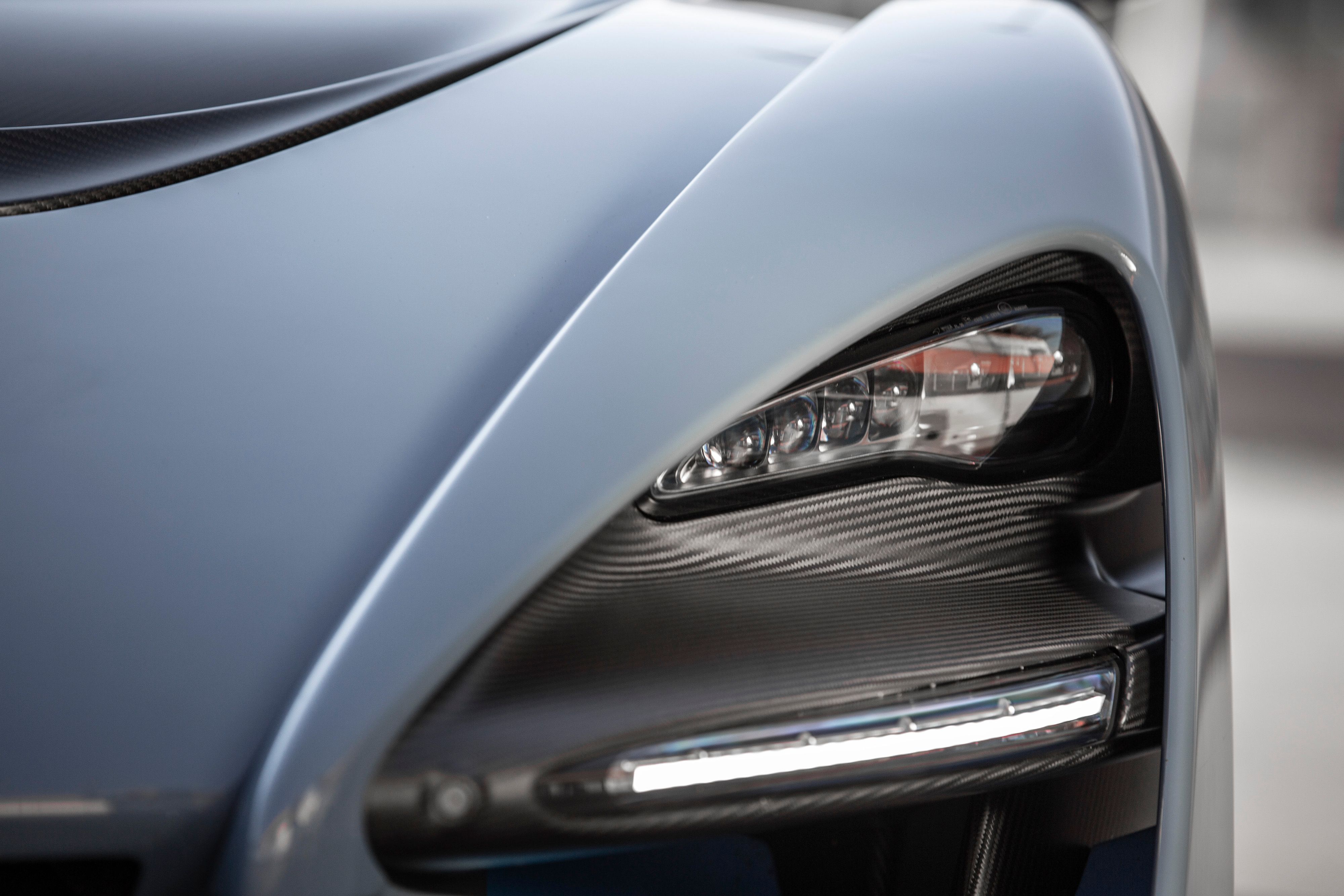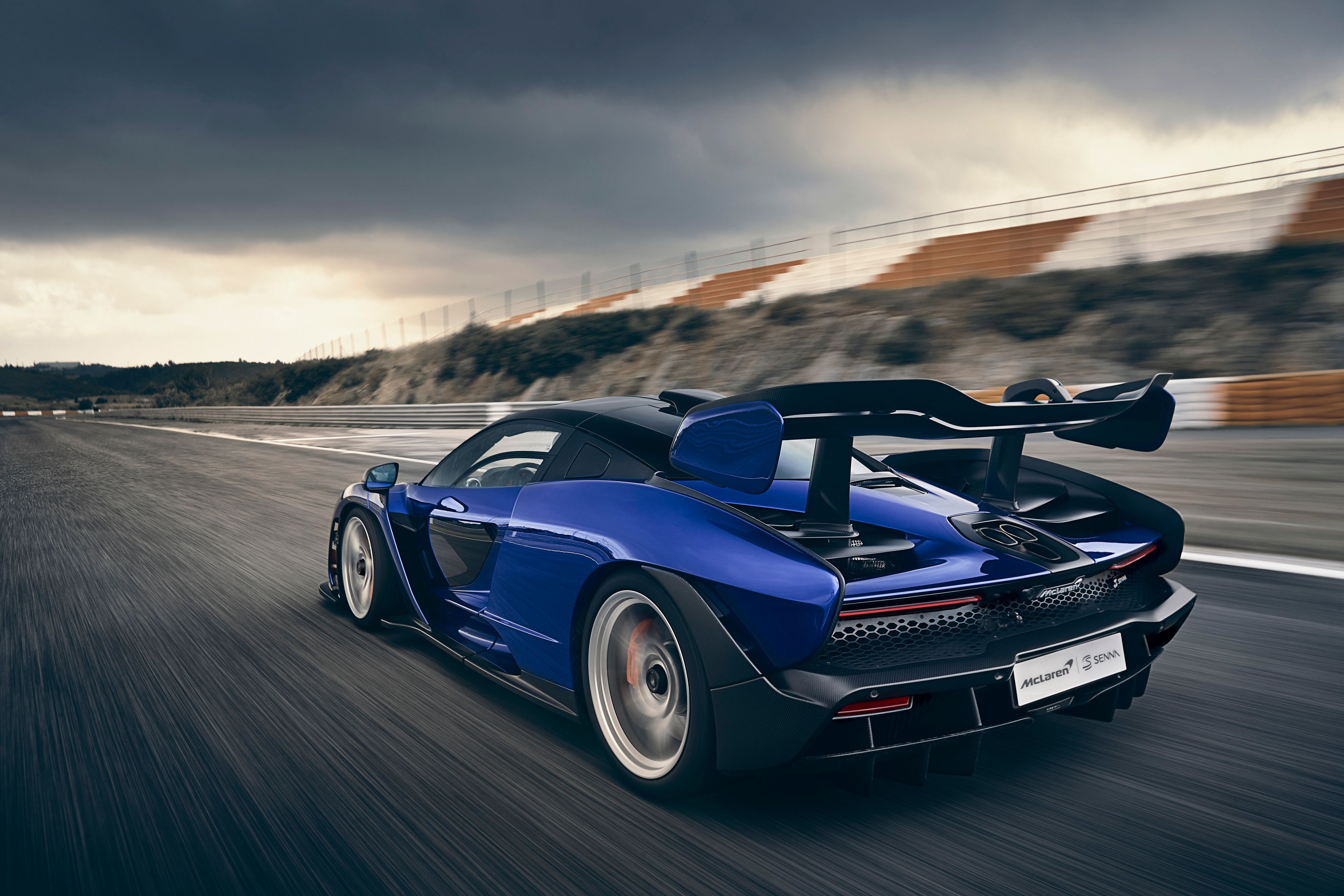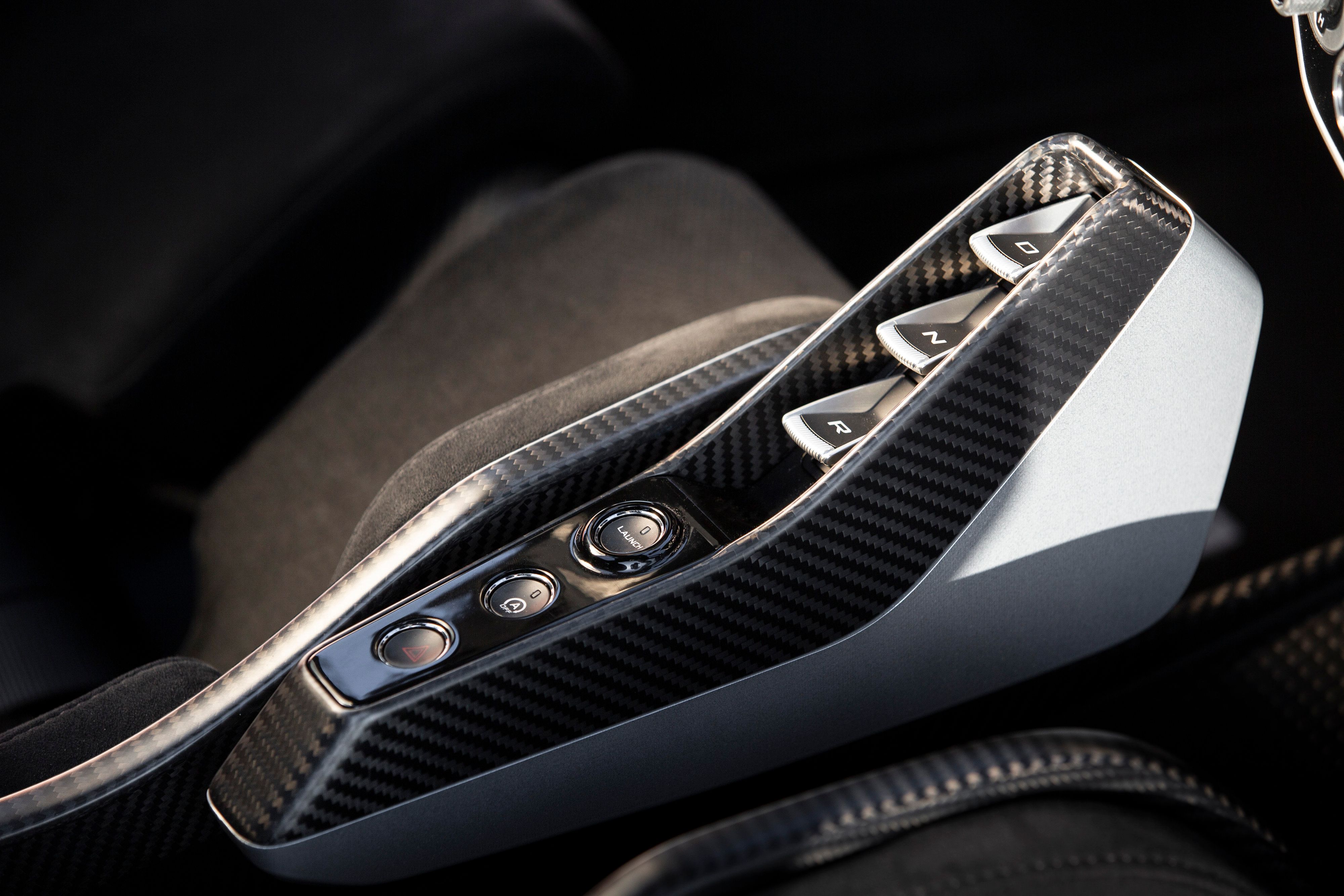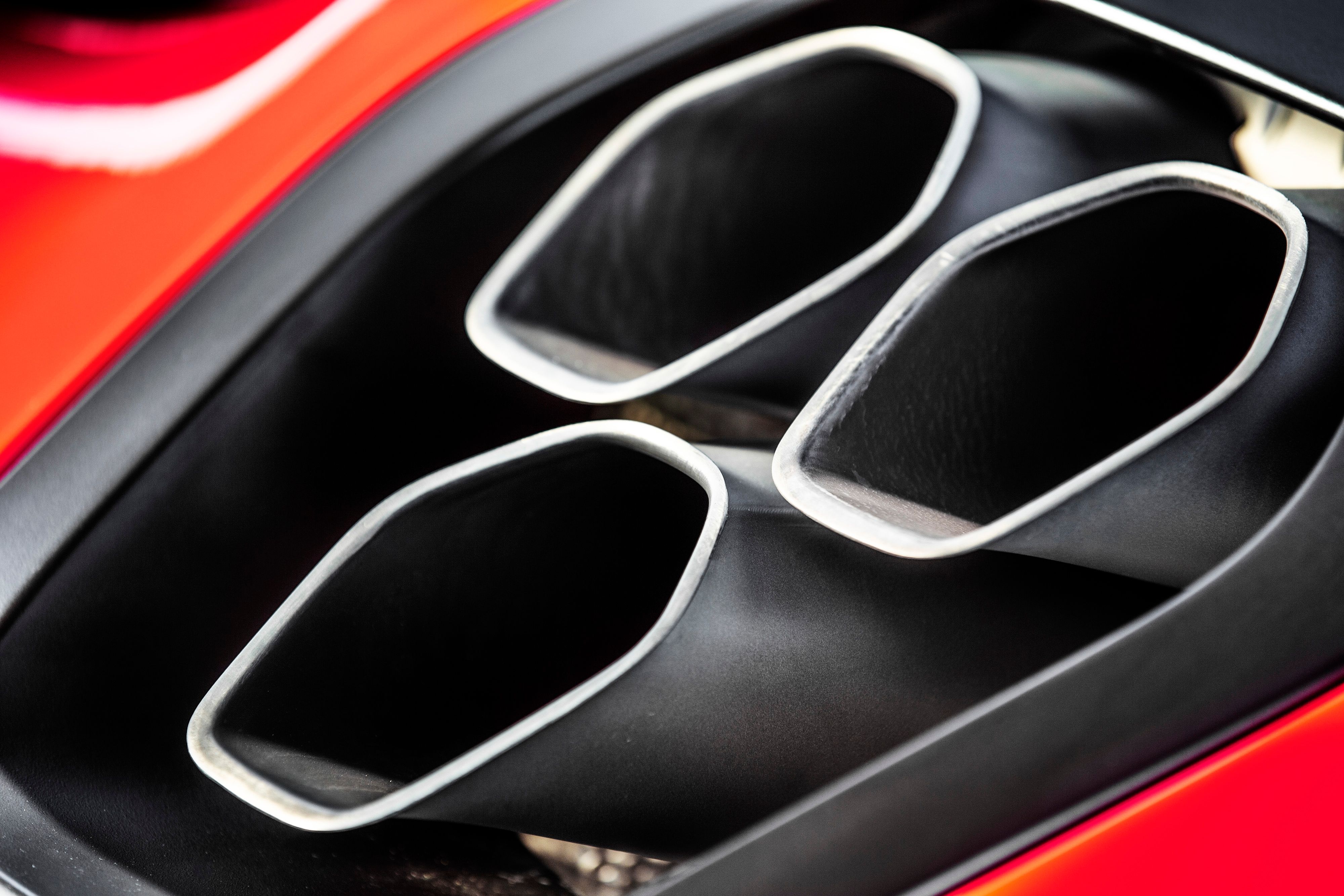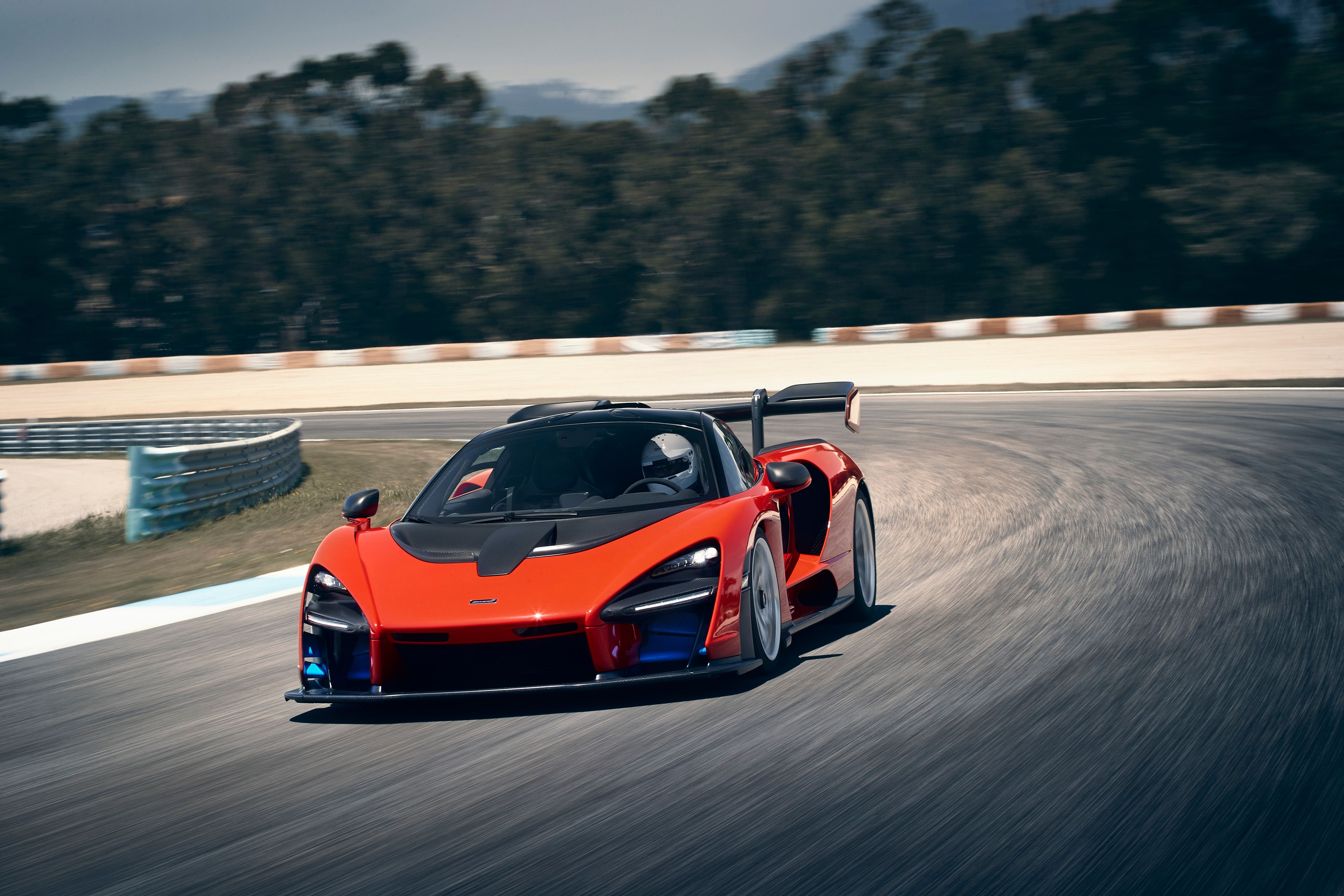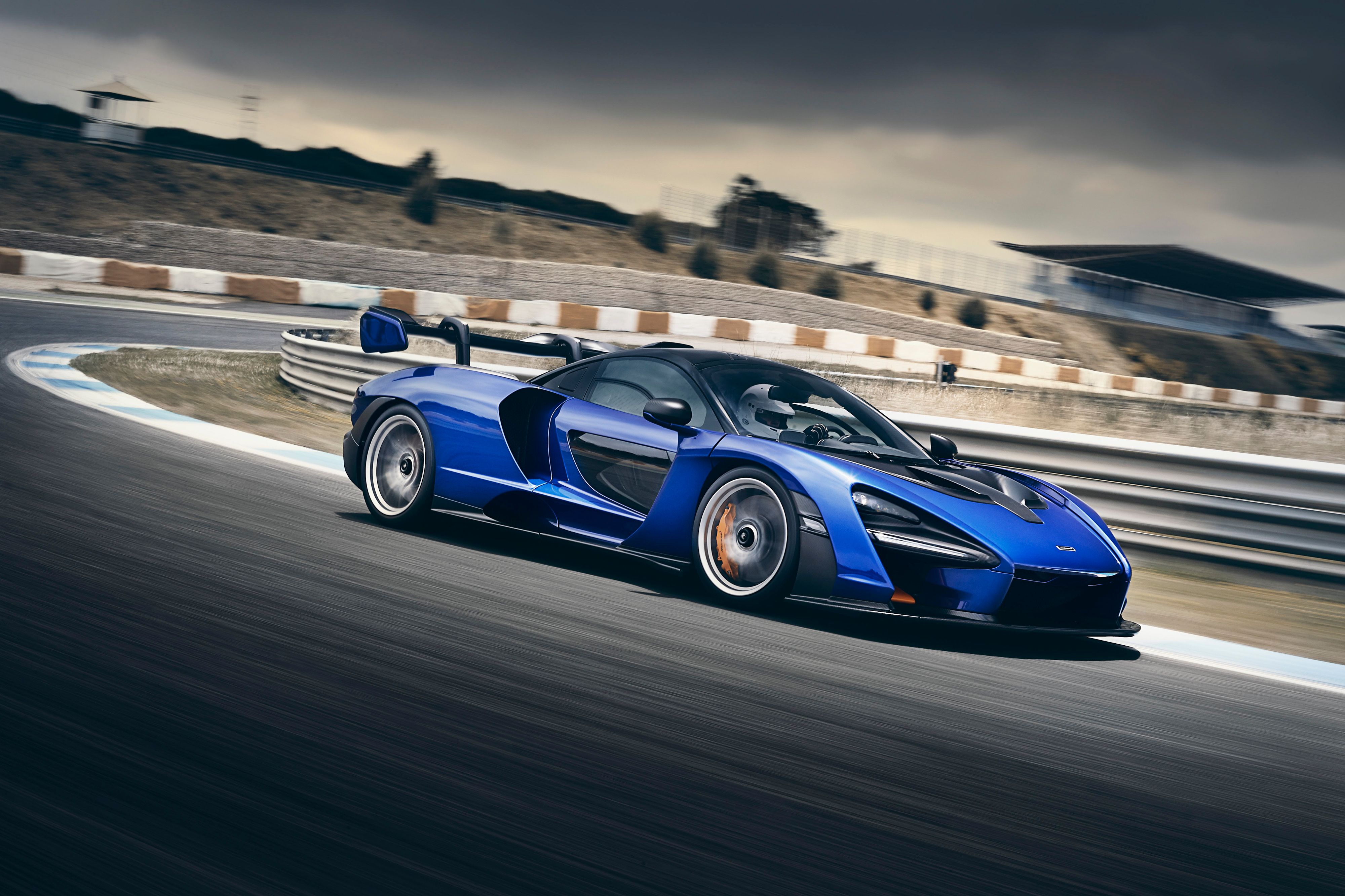Named after beloved Brazilian F1 driver Ayrton Senna, the McLaren Senna is an Ultimate Series model sharing apex predator status with the likes of Elva, P1, and Speedtail in the British supercar maker's lineup.
At the same time, the Senna is part of a new breed of supercars that feature F1-derived technology, so it's basically a competitor for the likes of Mercedes-AMG One and Aston Martin Valkyrie. As a result, it's brimming with features that make it both unique and a beast on the road or on the track. Stick around for an in-depth run-through of the Senna's quirks and specs.
Only 500 Sennas will be made
The Senna can create up to 800 kilos (1,764 pounds) of downforce
That alien-looking body kit isn't there just for show, although it can do that pretty well too. McLaren says the Senna is their fastest road car around a track and for that to happen, you need lots of air pressing down both axles. Hence the 800 kilos (1,764 pounds) of downforce at 250 kph (155 mph), generated by the body itself and through the use of active aerodynamics, such as the adjustable front blades and the swan-neck-shaped rear wing.
The carbon-fiber rear wing weighs just 4.87 kilos (10.7 pounds)
That's lighter than my cat, in case you were wondering, which tips the scales at a stout 6 kilos (13.2 pounds). However, the rear wing's most impressive feature isn't how much it weighs or how it's shaped. McLaren says that it can hold more than 100 times its own weight in downforce.
The whole car weighs in at 1,198 kilos (2,641 pounds)
That's more or less the weight of a 2005 Opel/Vauxhall Corsa or today's run-of-the-mill supermini. Since the V-8 makes 789 horsepower, the Senna has a power-to-weight ratio of 659 horsepower/ton. Oh, and the car's entire carbon fiber panels taken together weigh just 60 kilos (132 pounds). Furthermore, McLaren's obsession with cutting down on weight went to the extreme. A mechanical door release solution was ditched in favor of an electrical switch to reduce both weight and packaging volume. Heck, the company even switched from a hex head flange to a button head flange on the M6 bolts used to hold various parts in place for a 33-percent reduction in weight.
Seen from above, the Senna looks like a teardrop on wheels
McLaren's designers took nature's most efficient shape and baked it into the Senna supercar. According to McLaren, each corner was pushed out and into the airflow. At the same time, the car's lines pass through a functional intake or an air vent without exception, which dictated the car's raw and cut-out looks. To get an idea of how much thought went into its aerodynamics, consider that as the Senna accelerates, the airflow hits four different surfaces in the car's nose: the front splitter, the main active aero blades, the secondary aero blades (those are fixed), and a couple of slot-gaps mounted between the headlights and the DRLs (daytime running lights).
In Race Mode, the Senna's nose gets 39 mm closer to the ground
It does that to reduce airflow under the vehicle and to help the front splitter achieve it's best aero efficiency. What's more, this change works in tandem with other solutions, such as the front downforce duct which is basically an intake mounted in the flat underfloor of the car with the precise role of reducing airflow. Then there's another vent at the base of the windscreen - the one shaped like the letter Y but turned upside-down - which acts twofold: it sends air to the HVAC (heating, ventilation, and a/c) setup and at the same time, it generates downforce.
The Senna's headlights are 33-percent lighter than the P1's
Subsequently, the taillights are 50-percent lighter than the ones in the P1
Just like the headlights, the Senna's taillights are on the low-weight side. Specifically, each unit tips the scales at just one kilogram (2.2 pounds). One taillight is made of 84 LEDs arranged in a horizontal strip, with 60 red LEDs and 24 amber ones that work as turn indicators. They, too, have been tweaked for the best airflow efficiency possible
The Senna can cut the fuel spark during a gearshift
It only happens in Sport mode thanks to a system called Ignition Cut. It's actually another bit of tech that McLaren adopted from Formula 1 - first with the 675LT and now with the Senna - that aims to allow for faster gear changes. What's more, it also ups the ante acoustically, as it produces that specific crack on during upshifts and downshifts.
Inconel, an F1-specific material, was used for the exhaust setup
Having a fire-breathing (literally) V-8 set up for extreme performance comes with great responsibility. One aspect is heat management. That's why McLaren went for an exhaust setup that mixes titanium and Inconel.
0-60 mph takes 2.7 seconds, top speed is 208 mph
As per McLaren's literature, the Senna needs just 2.7 seconds to scorch through the 0-60 mph interval as it heads towards a Vmax of 208 mph. Furthermore, the sprint from zero to 124 mph takes 6.8 seconds, while 0-186 mph happens in 18.8 seconds. Theoretically, the Senna can run the quarter-mile in 9.9 seconds.
McLaren Senna performance figures
|
0-60 mph |
2.7 seconds |
|---|---|
|
0-124 mph |
6.8 seconds |
|
0-186 mph |
18.8 seconds |
|
Top Speed |
208 mph |
|
Quarter-mile |
9.9 seconds |
The Senna can brake from 200 kph (124 mph) to zero in just 100 meters (328 feet)
Courtesy of brake discs measuring 390 mm x 44 mm that are manufactured over a process that takes seven months, the Senna is just as able to slow down and stop as it is when it comes to shooting up in a straight line. Compared to standard carbon-ceramic brakes, the Senna's have four time the thermal conductivity and are 60-percent stronger. This allows them to operate normally at temperatures of up to 150 degrees Celsius, which are typically encountered during hard track driving. The calipers are inspired from F1 and employ a monoblock design and six vented pistons. Last but not least, the P ZERO Trofeo R tires for the Senna have been developed with Pirelli and they're unique to the supercar.
The personalization options are insane, too
There are 23 exterior paint options to pick from, followed by 16 colors offered by McLaren's MSO arm. If that's not enough, each customer can pick virtually any color he wants, as MSO works with a limitless spectrum of colors that can be created or mixed and matched. On the inside, the Senna can be adorned with Alcantara and carbon fiber, but it can also receive a bespoke treatment in the colors the owner wants. McLaren even offers a 24-carat gold engine heat shield, a nod back to the McLaren F1. The dihedral doors are standard, though, and every Senna has them.
McLaren developed a track-only race car based on the Senna: the Senna GTR
The Senna GTR makes 826 PS (815 horsepower) from the same V-8 found inside the Senna. It's also lighter, tipping the scales at 1,188 kilos (2,619 pounds) - 10 kilos (22 pounds) less than the Senna. The GTR produces 1,000 kilos (2,204 pounds) of downforce, but at lower speeds compared to the road-going Senna, so it's even further tweaked for track use - unlike the regular Senna, the GTR can't be driven legally on public roads. Only 75 Senna GTRs will be assembled, all stripped of creature comforts such as touchscreens and audio systems. A GT3-style, race-spec steering wheel replaces the regular unit.
McLaren Senna specifications
|
Engine |
M840TR 4-liter (3,944 cc) twin-turbo V-8 |
|---|---|
|
Power |
800 PS (789 hp) @ 7,250 rpm |
|
Torque |
800 Nm (590 lb-ft) @ 6,700 rpm |
|
Transmission |
7-speed SSG, dual-clutch |
|
Drive modes |
Comfort, Sport, Track |
|
Handling modes |
Comfort, Sport, Track, Race |
|
Length |
186.8 in |
|
Wheelbase |
105 in |
|
Height |
48.4 in |
|
Width |
84.7 in with mirrors |
|
Turning circle |
12.9 meters |
|
Dry weight |
2,641 pounds |
|
0-60 mph |
2.7 s |
|
Max speed |
208 mph |
|
Fuel consumption |
12.4 l/100 km (16 mpg) |
Q&A
How much is a McLaren Senna?
FAQ
Q: How much is a McLaren Senna?
The Senna starts at £750,000 or about $1.01 million before options.
Q: How many McLaren Sennas were made?
McLaren will produce just 500 Senna units. Each and every one is sold, by the way.
Q: How fast is the McLaren Senna?
McLaren says the Senna is capable of going from zero to 60 mph in 2.7 seconds. Top speed is 208 mph.
Q: Can the McLaren Senna do 300 mph?
Not in the current setup. The Senna is geared for track use first and foremost and while the potential for a 300-mph run might be there given the raucous mid-mounted V-8 and the low weight, this is not what McLaren intended with the Senna. There's also no word on a speed record attempt from McLaren, so the answer is no.
Q: What engine is in the McLaren Senna?
The Senna's uses McLaren's 4-liter twin-turbo V-8 codenamed M840TR. That's the same engine found inside the 720S, albeit further tweaked for the Senna.

